What laboratory properties are critical in the selection criteria for geomembranes?
Part 1: Identifying critical geomembrane chemical and environmental resistance properties
Selecting a geomembrane for a specific project can be a daunting task. There are many products, each claiming to be the best and some claiming to be the cheapest and/or good for every application. To top off the confusion, they are usually all black in color, making them appear to be identical. Many manufacturers use simple, arbitrary, but easily understood terms, like thickness, to attempt to differential themselves. In fact, commercial geomembranes are described by property sheets that may have 20 or more specifications. How then, do you really focus on the most important properties? This blog will focus on the 6 most important laboratory properties and how they relate to real world performance.
Looking at these 6 tests takes a high level look at essential properties and is inclusive of other items. By definition, a geomembrane is a manufactured fluid barrier which (typically) rests upon the earth. As a designer, the challenge is to take the minimum (not average, not typical, not MARV) properties of the geomembrane and relate them to the site requirements. To function properly, there are two broad performance categories:
Chemical/Environmental Resistance
Survivability
It is helpful when evaluating these performance requirements to identify which geomembrane sheet properties support these two categories.
Chemical/Environmental Resistance
1. UV
2. Chemical Resistance
3. Thermal Stability
Survivability
4. Tensile/Yield Strength
5. Seam Strength/Dead Load Seam Strength
6. Puncture
These are the 6 most important properties. Note thickness, polymer type, seam width, etc. are not included. These are the performance properties needed, regardless of those items. In fact, those non-inclusive items are vital components of the performance properties, but do not alone guarantee performance, predict field performance or provide design information. In this first of two blogs, we will discuss each property and how the laboratory testing relates to actual field performance for the properties related to Chemical/Environmental Resistance.
Chemical/Environmental Resistance
1. UV - Laboratory scale UV testing simulates outside exposure, including wet/dry cyclic exposure. UV data is considered transferrable to field conditions. While one would think UV is a given, that is not always the case and some major geomembrane polymers are specifically formulated to be buried. Anticipate that UV will be much higher in some areas than others. The other component of UV is thermal resistance discussed in no. 3, below.
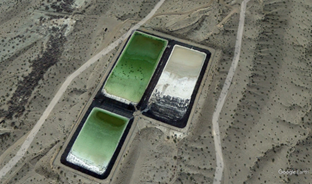 XR-5 Geomembrane lined Evaporation ponds, Mohave Desert, California USA
XR-5 Geomembrane lined Evaporation ponds, Mohave Desert, California USA
Source: Google Earth
2. Chemical Resistance - The ability of a geomembrane to contain the fluid in the application is a fundamental, but often misunderstood, property. It represents one of the first gateway decisions when evaluating geomembranes. Field immersions are preferable for mixed or variable liquids, while pure solutions can be tested with reliable results in laboratory test chambers such as shown below. Laboratory and/or field bench immersion testing are essential to determining compatibility and should utilize membrane test materials and conditions that are representative of real field conditions. An example is the requirement that fabric reinforced geomembranes should have edges exposed during testing as the base fabric will eventually be exposed in some manner during actual service. Laboratory and/or field immersion testing is scalable and reliable to predict field performance if the conditions are closely duplicated and the liquid tested is constant. Thirty days of continuous immersion typically produces reliable results, although longer periods are sometimes desirable with multiple testings to evaluate trends.
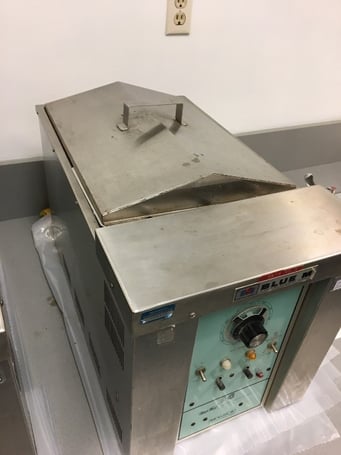 Laboratory temperature controlled immersion bath
Laboratory temperature controlled immersion bath
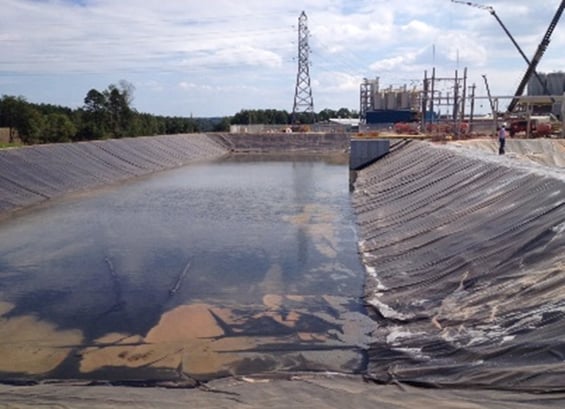 XR-5 Geomembrane lined industrial wastewater application.
XR-5 Geomembrane lined industrial wastewater application.
North Carolina, USA
Additionally, Water Vapor Transmission (WVT) or Solvent Water Transmission (SVT) are good laboratory indicators of geomembrane permeability and may or may not support chemical resistance testing results. WVT or SVT alone does not accurately predict chemical resistance.
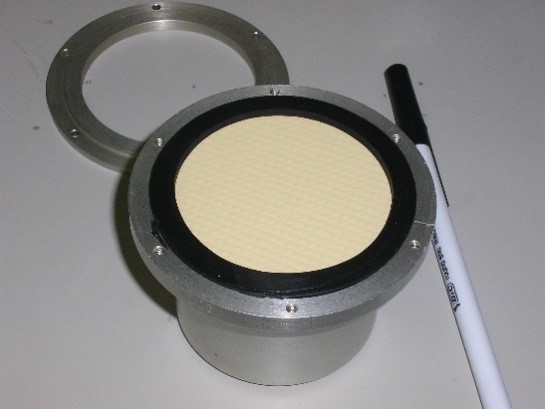 WVT/SVT Laboratory test cups
WVT/SVT Laboratory test cups
More detailed information can be found in these blog series:
Chemical Resistance vs Permeability
3. Thermal Stability - Two tests define this property.
Dimensional Stability – Permanent deformation due to heat is measured as Dimensional Stability. It is a test and property that defines the amount of heat induced shrinkage in geomembranes. Some geomembranes exhibit substantial shrinkage (>2%) due to heat. This means sunlight will create shrinkage which will induce forces on connections, including seams. Read our blog on the differences between UV resistance and thermal stability.
Thermal Expansion-Contraction (CTE) – CTE, on the other hand, measures cyclic, non-permanent expansion and contraction based on temperature of the geomembrane sheet, including seams. This laboratory test is a good measure of the amount of movement which can be expected based on temperature changes. Changing the color of a geomembrane may reduce the high temperature but does not change the CTE of the material. High CTE rates usually mean shorter geomembrane life in exposed applications and can cause the introduction of residual stresses during installation.
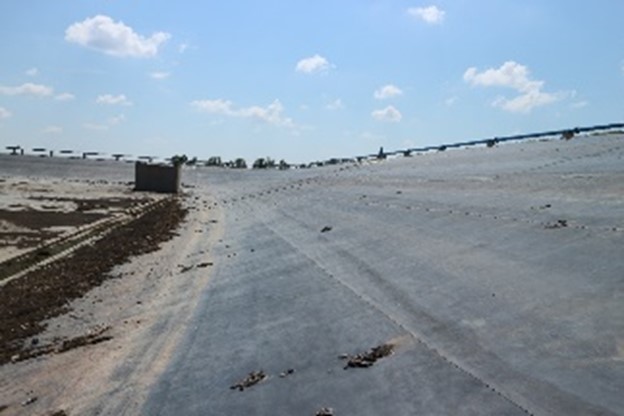
XR-5 Geomembrane, 92o F (33o C)
Oklahoma, USA (2019)
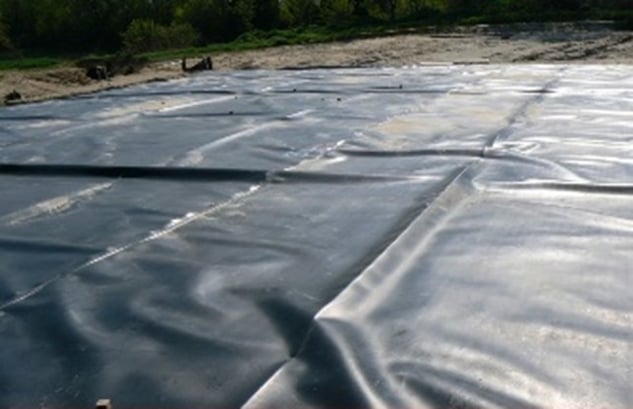
HDPE Geomembrane 63o F (17o C)
Ontario, Canada (2012)
Source: Rowe, et al.
Chemical and Environmental Resistance is an important, necessary component of a a successful geomembrane lining system. Equally important are the essential properties which define survivability of the system, which is discussed in the second part of this series.
All photos are sourced from Seaman Corporation unless indicated otherwise.



